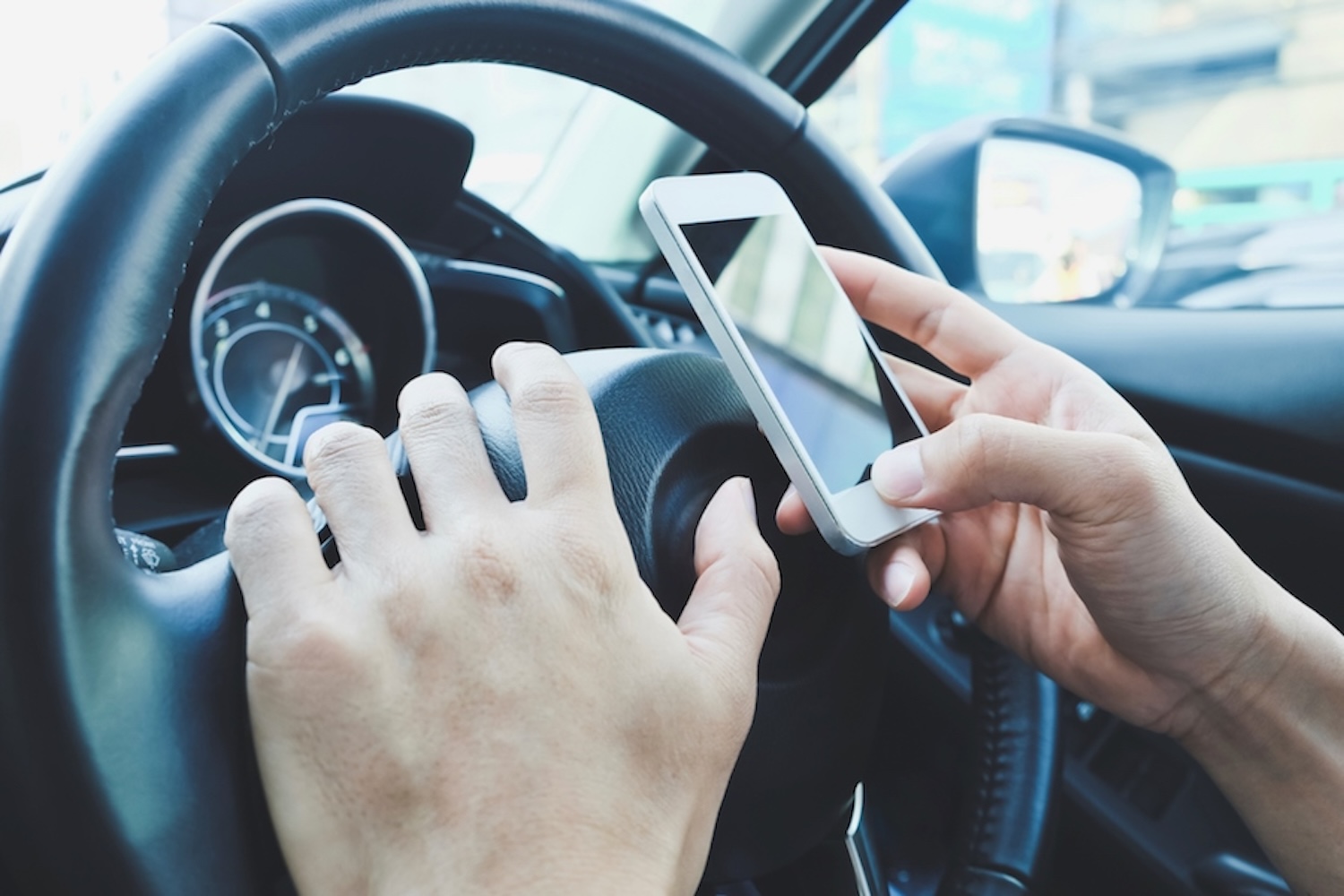Thirty per cent of Irish motorists admit to using their mobile phones while behind the wheel of their car. That is the worrying headline figure from research by insurance company Aviva.
Now, that figure does require some context, as it does include drivers who have connected their phones to a hands-free system, which is better, if not perfect, from a safety point of view. However, according to Aviva's study, of that 30 per cent, 40 per cent admit to using their phone without a hands-free function (that's 14 per cent of all drivers). And remember, this is the percentage of people who will actually admit to this, which may not necessarily be the actual numbers doing it.
Older drivers are safer
The highest concentration of those using their phones while driving is in the 25-44 year age group, of which 50 per cent admitted to phone use. For those aged 55 or over, the number falls to 20 per cent. The over 55s are also the safest in another category - 74 per cent say that if they use their phones in the car, it's only ever via a hands-free system. 61 per cent of those aged 25-34 years say that they occasionally use theirs without hands-free, while 11 per cent say that they don't have a hands-free connection.
Interestingly, there is only a two per cent variation overall when it comes to the gender split - women and men seem to be equally likely to pick up their phones when behind the wheel.
Mostly for maps
What are we using our phones for? 79 per cent say it's for maps and checking directions, while 38 per cent check text messages, 35 per cent send text messages, 30 per cent send voice notes, 19 per cent check emails, with 14 per cent checking social media and six per cent sending emails.
The Aviva survey found that of those who use their phones while driving, the percentage who check maps and directions, whilst high across all the age cohorts, is highest amongst those aged 25-34 years at 89 per cent and amongst women at 84 per cent (men: 73 per cent). Those in the 25-34-year age cohort also recorded the highest frequency of sending text messages (53 per cent), checking emails (34 per cent), and sending emails at 11 per cent. Checking text messages (45 per cent), sending voice notes (68 per cent), and checking their social media (59 per cent) were highest amongst the youngest age cohort of 18-24 years. More men claimed they use their phones to check text messages (41 per cent), check emails (27 per cent), send emails (10 per cent) and check their social media (15 per cent), with more women checking text messages (45 per cent) and sending voice notes at 37 per cent.
Putting lives at risk
Commenting Alan Behan, Aviva said: "It is shocking to see the high level of mobile phone use when driving and to understand the extent to which they are being used without hands-free by 14 per cent of all drivers on our roads. Apart from the fact that it is illegal to use a mobile phone without hands-free when driving, those that do so are putting their own lives and the lives of others at risk. It is simply not possible to carry out any activity on a mobile phone and while at the same time giving your full attention to driving safely.
"A total of 58 people have lost their lives on Irish roads as at 2 April this year, 16 more than the number of fatalities recorded at the same time last year. These stark figures alone should be a wake-up call to those who continue to use their mobile phones without hands-free when driving. The 58 deaths to date on our roads are not simply statistics but are people who still had their lives to live and who have left devastated family and friends behind who will never come to terms with the premature death of their loved ones. According to the Road Safety Authority (RSA)**, 184 people died on our roads last year, a 19 per cent increase over 2022 and represents the highest number recorded in the last ten years. Of those fatalities, 78 per cent were men and over a quarter of these tragedies were people aged 16-25."
The wrong shoes
Using your phone behind the wheel is a known red-flag for inattentive and distracted driving, but what about wearing the right shoes?
Aviva's study also found that 49 per cent of drivers admit to wearing 'inappropriate' shoes, with 24 per cent admitting to driving in flip-flops. 17 per cent say that they've driven in slipper, while 15 per cent have done so in bare feet. An equal 13 per cent have driven while wearing platform boots or wellies, while eight per cent say they've worn stilettos, and two per cent have driven with a foot in a cast.
"While there are no laws preventing drivers from wearing whatever footwear they wish when driving, it is safer to wear something that would or could not impede driving safely. Wearing the wrong kind of shoes could potentially lead to 'pedal error', impacting the use of pedals or indeed pushing the wrong pedal which could in turn cause a crash. Driving while wearing flip flops or sliders is illegal in some European countries, including Germany, France, and Spain. Drivers can always change into their preferred footwear options when they have safely reached their destination," said Alan Behan.

